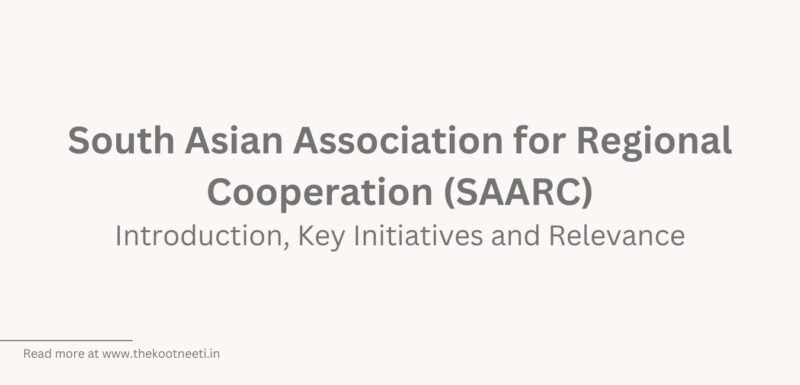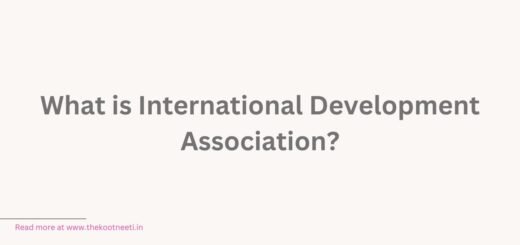South Asian Association for Regional Cooperation (SAARC): Introduction, Key Initiatives and Relevance

The South Asian Association for Regional Cooperation (SAARC) is an intergovernmental organization that promotes cooperation and dialogue among the countries of South Asia. It was established in 1985 and is headquartered in Kathmandu, Nepal. The SAARC membership consists of eight countries in South Asia: Afghanistan, Bangladesh, Bhutan, India, Maldives, Nepal, Pakistan, and Sri Lanka.
The SAARC works to address issues such as poverty alleviation, economic development, and regional security, and it also serves as a forum for discussing regional issues and promoting regional cooperation. The SAARC has a number of sub-regional and sectoral bodies that focus on specific issues, such as agriculture, health, and education.
Key initiatives
The South Asian Association for Regional Cooperation (SAARC) has undertaken a number of projects and initiatives in the South Asian region. Some examples include:
- SAARC Food Bank – Established in 2010, the SAARC Food Bank is a regional organization that aims to address food security issues in South Asia by facilitating the exchange of surplus food among member countries.
- SAARC Disaster Management Centre (SDMC) – Established in 2006, the SDMC is a regional organization that aims to improve disaster preparedness and response in South Asia by providing training, technical assistance, and other support to member countries.
- SAARC Energy Centre (SEC) – Established in 2009, the SEC is a regional organization that aims to promote energy cooperation in South Asia by providing information, training, and technical assistance to member countries.
- SAARC Agricultural Centre (SAC) – Established in 1988, the SAC is a regional organization that aims to promote agricultural development in South Asia by providing information, training, and technical assistance to member countries.
- SAARC Cultural Centre (SCC) – Established in 1997, the SCC is a regional organization that aims to promote cultural exchange and cooperation in South Asia by organizing cultural events and activities, and by providing information and resources on the cultures of member countries.
Is it relevant in the 21st Century?
There are a number of reasons why the South Asian Association for Regional Cooperation (SAARC) has been relatively inactive in recent years. Some of the main factors include:
- Political tensions between member countries – SAARC has been hampered by political tensions between some of its member countries, particularly India and Pakistan. These tensions have made it difficult for the organization to make progress on issues of regional cooperation.
- Lack of progress on key issues – SAARC has struggled to progress on key issues such as regional trade and economic integration, which has limited the organization’s effectiveness.
- Limited resources and capacity – SAARC has relatively limited resources and capacity compared to other regional organizations, which has made it difficult for the organization to pursue its goals.
- Competition from other regional organizations – SAARC has faced competition from other regional organizations, such as the Bay of Bengal Initiative for Multi-Sectoral Technical and Economic Cooperation (BIMSTEC) and the Shanghai Cooperation Organization (SCO), which have made it more difficult for SAARC to attract the attention of member countries.
- Changing global priorities – The global political landscape has changed significantly since SAARC was established, and this has led to a shift in the priorities of member countries, which has made it more difficult for SAARC to advance its goals.



















